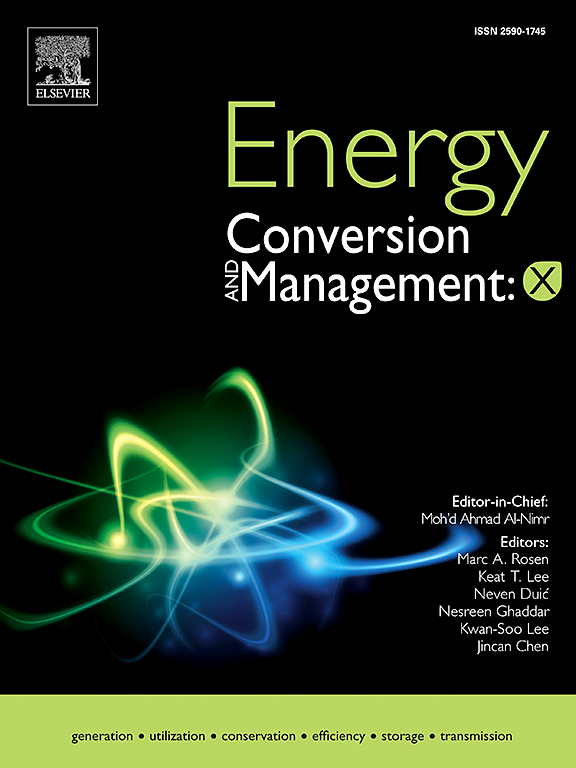Optimal configuration of shared energy storage for multi-microgrid systems: Integrating battery decommissioning value and renewable energy economic consumption
IF 10.9
1区 工程技术
Q1 ENERGY & FUELS
引用次数: 0
Abstract
With the evolution of energy structures and the rise of the sharing economy, shared energy storage is poised to become a standard for managing energy demand and enhancing flexibility amidst wind and solar variability. This paper introduces a two-layer optimization method for shared energy storage configuration in multi-microgrids, focusing on economic efficiency in combined cooling, heating, and power (CCHP) systems. It accounts for the residual value of retired batteries to facilitate future battery recycling and improve energy utilization. The upper layer addresses capacity allocation, while the lower layer optimizes system operations. Using the Karush–Kuhn–Tucker conditions, the lower layer’s constraints are integrated into the upper layer, with the Big-M method applied for linearization. The model’s effectiveness is demonstrated through four scenarios, showing that shared energy storage increases renewable energy consumption from 73.05% to 99.93%, reduces annual operating costs, and achieves cost recovery in 4.44 years. However, battery degradation is higher than anticipated, necessitating an 17.6% increase in capacity allocation when battery life is considered. Service providers should procure low-degradation, high-performance batteries and plan battery retirement around the twelfth year to maximize residual value, fostering a beneficial scenario for both users and providers.
多微网系统共享储能优化配置:整合电池退役价值与可再生能源经济消耗
随着能源结构的演变和共享经济的兴起,共享储能有望成为管理能源需求和增强风能和太阳能变化灵活性的标准。针对冷热电联产系统的经济性问题,提出了一种多微电网共享储能配置的双层优化方法。它计算了退役电池的剩余价值,以方便未来电池的回收和提高能源利用率。上层处理容量分配问题,下层处理系统操作优化问题。利用Karush-Kuhn-Tucker条件,将下层的约束整合到上层,并采用Big-M方法进行线性化。通过4个场景验证了该模型的有效性,结果表明,共享储能将可再生能源消费从73.05%提高到99.93%,降低了年运行成本,在4.44年内实现成本回收。然而,电池退化率高于预期,考虑到电池寿命,需要增加17.6%的容量分配。服务提供商应该采购低退化、高性能的电池,并在12年左右计划电池退役,以最大限度地提高剩余价值,为用户和提供商创造一个有利的局面。
本文章由计算机程序翻译,如有差异,请以英文原文为准。
求助全文
约1分钟内获得全文
求助全文
来源期刊

Energy Conversion and Management
工程技术-力学
CiteScore
19.00
自引率
11.50%
发文量
1304
审稿时长
17 days
期刊介绍:
The journal Energy Conversion and Management provides a forum for publishing original contributions and comprehensive technical review articles of interdisciplinary and original research on all important energy topics.
The topics considered include energy generation, utilization, conversion, storage, transmission, conservation, management and sustainability. These topics typically involve various types of energy such as mechanical, thermal, nuclear, chemical, electromagnetic, magnetic and electric. These energy types cover all known energy resources, including renewable resources (e.g., solar, bio, hydro, wind, geothermal and ocean energy), fossil fuels and nuclear resources.
 求助内容:
求助内容: 应助结果提醒方式:
应助结果提醒方式:


